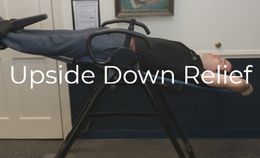It’s easy to picture the exuberance on a child’s face while jumping on a trampoline—but trampolines are not just for children. In fact a long-term, retired patient just walked into our office, mentioning the plethora of benefits she experienced as a result of using her trampoline. She explained the improvements in her balance, as well as not having any embarrassing side effects from sneezing and coughing (see below for discussion of organs of continence).
Trampolines offer an effective way to increase heart rate, which leads to improved cardiovascular health. The lymphatic system, which supports immune function, is also stimulated by the gentle decompression-compression as the body moves from weightless to a positive g-force through the course of bouncing (1). As the previously mentioned patient highlighted, balance and coordination can also be greatly improved through trampolining. Since the body invariably hits the trampoline at varying angles and forces, the body must accommodate these shifting variables to find its center of gravity and re-balance before the next landing (2). This enables the body to improve its ability to maintain equilibrium despite unexpected movement patterns, improving recovery time. In other words, balance and coordination improve!
While these benefits can improve health for anyone, jumping on a trampoline can be particularly beneficial for children to support development of strong muscles throughout the body. Trampolines can also help older adults in the prevention of osteoporosis by strengthening bone structure (3). Another benefit for everyone, that may particularly interest older adults, is that the pelvic floor (including the muscles and organs of continence) can be strengthened by the gentle stress of trampoline jumping (4).
Dr. Haggquist suggests starting with just 2-3 minutes on the trampoline, and building up to 20-30 minutes over time. To get started, Dr. Haggquist recommends at least a 6’ diameter children’s trampoline, which will effectively support an adult’s weight. If opting for a smaller version, make sure to choose one with bungee cords rather than springs, which create a softer and more comfortable, yet lively bounce. It’s also a good idea to purchase and use the handrail for safety, available on smaller bungee cord trampolines.
If you are interested in learning more about using the trampoline on your road to recovery or better health overall, give us a call to schedule a new patient appointment! Dr. Haggquist would be pleased to guide you with more more specific advice on how to integrate the trampoline into your recovery or fitness routine.
References:
(1) Kent, L.T. (2013). Specific mini-trampoline lymphatic exercises. Retrieved from:http://www.livestrong.com/article/214246-specific-lymphatic-exercises-for-a-mini-trampoline/
(2) Williams, L. (2014). 4 health benefits of trampoline exercises – how to choose the right one. Retrieved from: http://www.moneycrashers.com/health-benefits-trampoline-exercises/
(3) Betz, S. (2010). Just what are the best exercises for healthy bones? Retrieved from:https://therapilates.wordpress.com/2010/01/01/just-what-are-the-best-exercises-for-healthy-bones/
(4) Jenkins, C. (n.d.) Bouncing: It’s not just for kids. Retrieved from:https://breakingmuscle.com/bodyweight/bouncing-its-not-just-for-kids
Authored by Anna Clements





















